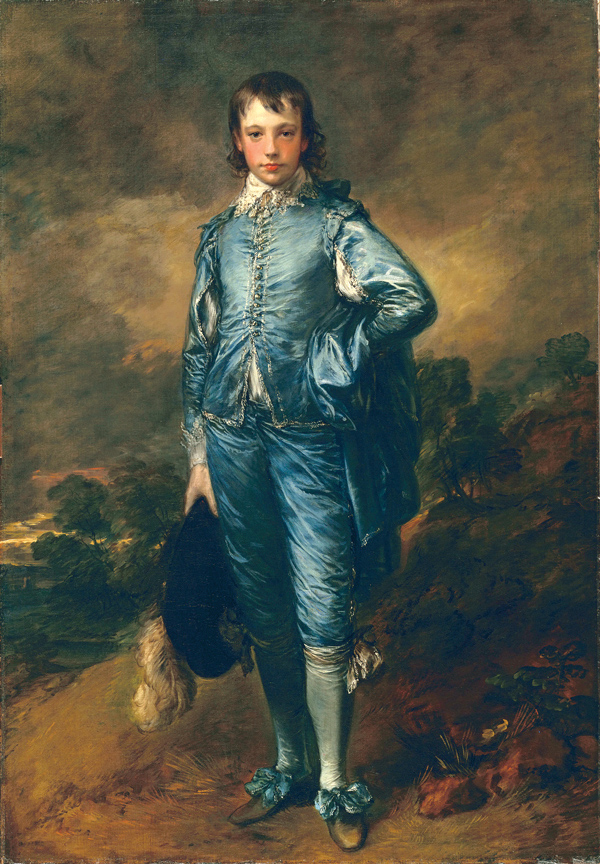We all know The Blue Boy (c. 1770) by Thomas Gainsborough, and for some of us there is a special attachment, while others only know it because it is famous. What most people don’t know is who the blue boy in the painting is, and that’s because it isn’t important.
Gainsborough painted The Blue Boy as a statement, hoping to prove that his rival artist, Sir Joshua Reynolds, was completely out of his mind when he declared that cool colors such as blue and green should only exist at the edge of a painting and that the center should always be dominated by warm colors such as reds and yellows. Of course I could care less, but I do care about the boy in the painting whose life only matters now to prove a point about a color scheme. Is this why his shoes look so absurd: because they are not his, and he is having trouble standing in them? His posture is also odd, because he is just a kid in a costume, unaccustomed to the royal way in which he is dressed. He sticks his chest out until he nearly falls backwards, and his expression is deeply devoid of the self-centered snobbishness that is beaten into fledgling aristocrats even at the age of four. This kid is honestly happy, which is why we love him, even though his pose is ridiculously artificial.
Maybe the boy is in on the joke. Maybe he is the cobbler’s son and he is just helping out. Little does he know that for the rest of time he will be recognized as a child of wealth and breeding. Even more impossibly he will cheat death and live happily forever, grinning over his little secret. Maybe that’s why we love him so: He is a dream come true. Then again, maybe all he needs is a good beating.
Thomas Gainsborough’s The Blue Boy, is part of the permanent collection at The Huntington Library in San Marino, CA.


